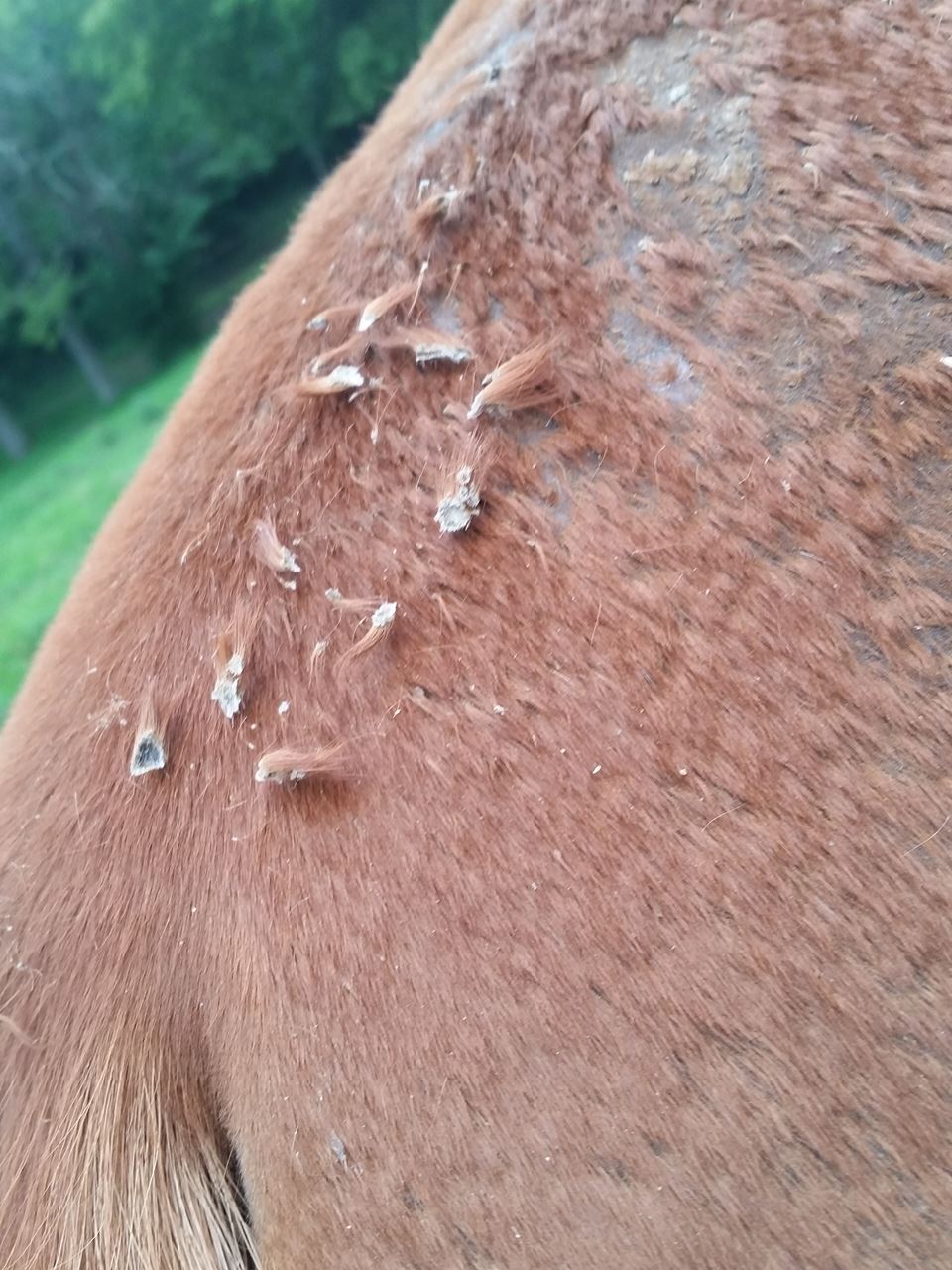 (Photo credit: mseda.org)
(Photo credit: mseda.org)
As we leave behind one of the
wettest years on record for NC, chances are you have at least heard the term
rain rot over the last few months. Rain
rot, aka dermatophilosis, is a skin condition that affects horses housed primarily
outside. The condition is often mistaken
for a fungal infection but is actually caused by the bacteria, Dermatophilus
congolensis. The bacteria lives dormant
on the skin of horses and under normal conditions is benign, but when the skin
becomes rain soaked or broken by either trauma or insect bites, it is more
likely to develop into the condition. A
heavy winter hair coat is more likely to hold moisture close to the skin,
causing anaerobic (lacking oxygen) conditions and exacerbating the condition.
Rain rot can usually be diagnosed
by visual inspection. The hair coat will
be in matted tufts from neck to hindquarters with lesions on the skin
underneath. Sometimes the legs will be
affected as well. If not treated promptly,
the lesions will grow and create scabs with yellow-green pus under them when
removed. Any hair attached to the scabs
may come off as well.
Treatment starts with removing the
crusty scabs to expose the infected skin to oxygen. Scab removal is usually done by bathing the
affected area in some type of antimicrobial soap (Betadine, Chlorhexidine,
etc.) and gently removing the scabs with a brush or curry comb. In severe cases, antibiotic treatment may be
required. After the skin is cleaned and
scabs removed, it is important to keep the skin dry by either housing the horse
in a barn, or if that is not possible putting on a weather proof blanket, although
this method is not preferred because it limits the amount of oxygen reaching
the skin.
Rain rot is highly contagious so
good sanitary practices should be used if you have an infected horse on your
farm. It can be transferred through
brushes, tack, and even by insects so cleaning equipment and tools and isolating
the infected horse is important in keeping this infection from spreading. You should also never share blankets between
an animal that you suspect is infected with other animals. Wash hands thoroughly after handling the
infected horse.
Mild to moderate cases of rain rot
should clear on their own, but all cases should be treated to prevent the
infection from worsening or from spreading to other horses. If you suspect your horse has a case of rain rot
and antimicrobial treatment is not effective, contact your veterinarian.
If your animal is susceptible to mud fever, rain scald or thrush, a twice weekly maintenance spray is recommended.If your horse is suffering from minor skin abnormalities caused by greasy heel, rain scald and thrush, place your order for equinecare probiotic spray on our website https://equinecareprobiotic.com.au
ReplyDelete